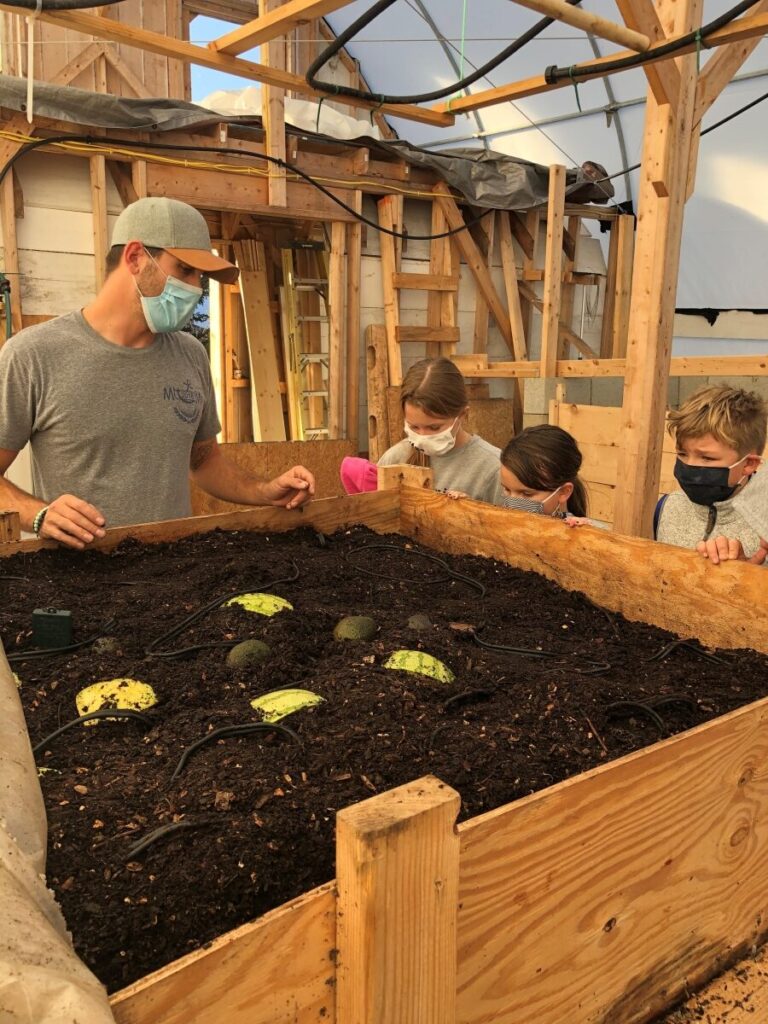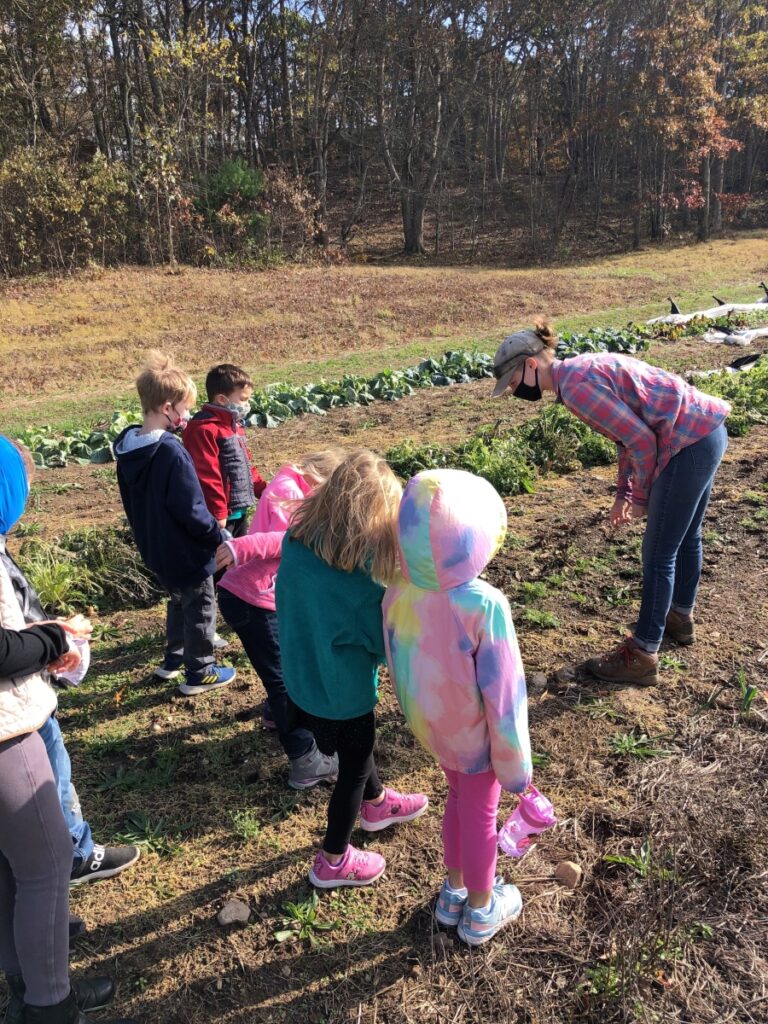Joseph Barnes is a 2020-2021 TerraCorps Youth Education/Community Engagement Coordinator at the Westerly Land Trust. To learn more about Joe’s work in Westerly, visit The Westerly Land Trust or contact him directly at jbarnes@westerlylandtrust.org.
Life has changed drastically over the last year, and it seems like it will only continue to change rapidly. In these hard times; however, people have discovered one constant- nature.
Hitting the trails has been an integral social-distancing activity for thousands in Westerly, Rhode Island, who have enjoyed the Westerly Land Trust preserves. Nature, however, has not been a constant source of joy for everyone this year as wildfires blaze across the West Coast, the Northeast experiences heavy droughts, and the South continues to see flooding. The threat of climate change will continue to exacerbate these problems, so it is the mission of people like myself and other TerraCorps members to reconnect people to the land and build resiliency to sustain people’s way of life. My goal during my service year is to bridge the urban-rural divide, and build empathy towards nature in a paradigm shift from “nature is pretty and should be conserved,” to one that understands the vitality of land within a global ecosystem. We need to recognize that we are as much a part of that ecosystem as every squirrel and bird you see, and that we should strive to be good stewards of the land not just because it’s nice to look at, but because our way of life depends on its health.
In a typical year, the Westerly Land Trust connects with local schools by bringing entire grades or classes out to preserves for field trips, but current COVID restrictions cap outdoor events at 10 people. The same number of students from schools, however, still need access to environmental education which is why I created the Living Laboratories field trip series. Built around the idea of an outdoor classroom, “living laboratory” implies an active area of exploration where one can observe the natural environmental processes taking place. Getting your hands dirty is encouraged if it means digging around in a rotten log to find snake skins or salamanders, or Yellow Mealworm Beetles and Sulphur-winged Grasshoppers!

Creating & Implementing the Living Laboratories Curriculum
I wrote a curriculum for the five-week series that correlated to federal and state education standards, and drew from teaching resources games and activities to emphasize the subject matter. The field trips were broken down into grades K-2, 3-5, and 6-8, with a different set of values taught at each grade level.
The youngest group learned basic science and ecology topics like Animal Structure and Function and Food Webs. The first week, Conservation Programs Manager Meg Lee and I took the kids to Wahaneeta Preserve equipped with bug catchers, animal identification sheets and nets, with the quest to find as many animals as we could so we could discuss how each of them look, move, and eat. I underestimated the energy of kindergarteners and second graders and as soon as we rounded a corner and saw a stream, the kids were in it. The stream had previously dried up over the summer during the drought, but was newly refilled to ankle-height after a couple days of rain, so we were able to walk along, or in this case, in, the stream to search for insects and amphibians. The students were fascinated trying to catch wastriders that were too fast even for them. Over the next four weeks, the students’ love of the outdoors noticeably grew and they could not wait to get started on the hike.
Third through fifth graders explored the interconnected relationship between humans and the environment. Their hikes and activities focused not only on exploration, but on discovery. When they found a cool rock, we looked around for others with similar patterns to find out how that rock came to be, or if they found a plastic water bottle, we looked around at the places it could end up and how it would affect its downstream environment. They discovered that natural processes occur all around us, all the time, as demonstrated with their Leaf Mobiles that show the transfer of energy from warming and cooling air to moving the leaves in the wind. It reminds us that things happening in nature are not independent events. The thunderstorms and rain that humans experience are also experienced by the deer, chipmunks, and coyotes living nearby.
With this frame of interdependence, the 6-8 grade Living Laboratory curriculum focuses on the individual action necessary to help conserve the land. Collecting fallen branches and leaves to construct faux beaver dams and eagle nests showed the students how animals can directly alter terrain and use natural resources. Holding a mock town council debate on zoning regulations while acting out different characters demonstrated the need for human involvement and introduced new perspectives. These activities introduced students to a range of conservation tactics from the hands-off approach to those premised on the need for direct human management.
Building Lasting Impact in the Community

As a TerraCorps member, I believe it is my responsibility to address gaps in land stewardship and remedy them with capacity building projects that create lasting impacts on the community or environment I am serving. Doing so, however, requires addressing centuries of injustices towards environmentalism such as colonial agricultural practices that razed 80% of Rhode Island’s forestland to make room for flat agricultural fields, encroaching on indigenous tribes and lands and driving native biodiversity away. We hear about humans ruling over the environment in cases like releasing wolves into Yellowstone, re- and pro-forestation areas, or putting fencing around turtle nests to keep humans and natural predators away. It seems that humans have shaped the environment around their desires for long enough that some natural spaces cannot function without our interference. This includes prescribed burns that clear away debris and help seed packets germinate, clear cutting old growth to make room for new underbrush that provides habitat for a whole score of wildlife, to water and soil testing and remediation.
I want access and safety in nature for everyone. I have seen firsthand how this access helps people become their true selves. This may look like first graders pretending to be race cars in the woods or allowing eighth grade intellectual curiosity flow. Nature breaks down the barriers of judgement, social cliques, and conformity, creating a groundwork for education, exploration, and insight. The naturally unstructured lives of Westerly’s woodland wildlife somehow allows us to find clarity and peace in our lives with a vision of what our world can look like living in harmony with the smallest earthworm and the largest white-tailed deer.
Using Service to Address Inequity
Serving as a youth education and community engagement coordinator at an environmental non-profit, I do not believe it is my place to impose my own socio-environmental viewpoints, but rather open the doors for discussion and offer these points of views to the world. It is my responsibility to ensure that all voices are heard in Westerly’s local environmentalism movement and provide the resources for equitable access to land, which is why the Living Laboratories were free and located on different preserves to potentially make it easier for students with less access to transportation to attend.
The COVID-19 pandemic has also brought to light inequalities that still permeate our society, like access to healthcare, affordable and reliable internet access, and ability to work from home. For those affected by these resource gaps, I modified the Living Laboratories curriculum into downloadable lesson plans that parents can take, for free, from the Westerly Land Trust website. Although it doesn’t solve the issue of internet access, it does allow parents who cannot take their children to safe, conserved, open spaces to still teach quality environmental education. The lesson plans have the key points written out of what students should learn by grade points, along with clearly explained fun activities to do to visualize and understand the subject matter. I’ve had people from Maine all the way down to Georgia download the lesson plans!
In a rapidly changing climate, it is imperative that everyone has equal footing to face the challenges ahead. Children must learn why there was no abundance of creatures in the stream that dried out, because it may have affected amphibian’s hibernation or insect’s larval stages, why a few water bottles will end up downstream and suffocate or crowd out wildlife, or why humans should be proactive in trail and protected land management. I had students who were on board with an environmental career, and students who wanted to be graphic designers or voice actors, but regardless of someone’s profession, we all rely on the same land. It is the same reason why STEM turned into STEAM (Science, Technology, Engineering, Art, and Mathematics); creative innovation in design, communication, and sustainability is needed. I won’t solve the existential threat of climate change with a few lesson plans here in Westerly, Rhode Island, but myself, and all other TerraCorps members, will foster an inclusive atmosphere with local resiliency-building efforts to ensure our little corners of the world can face any challenge that comes its way.
